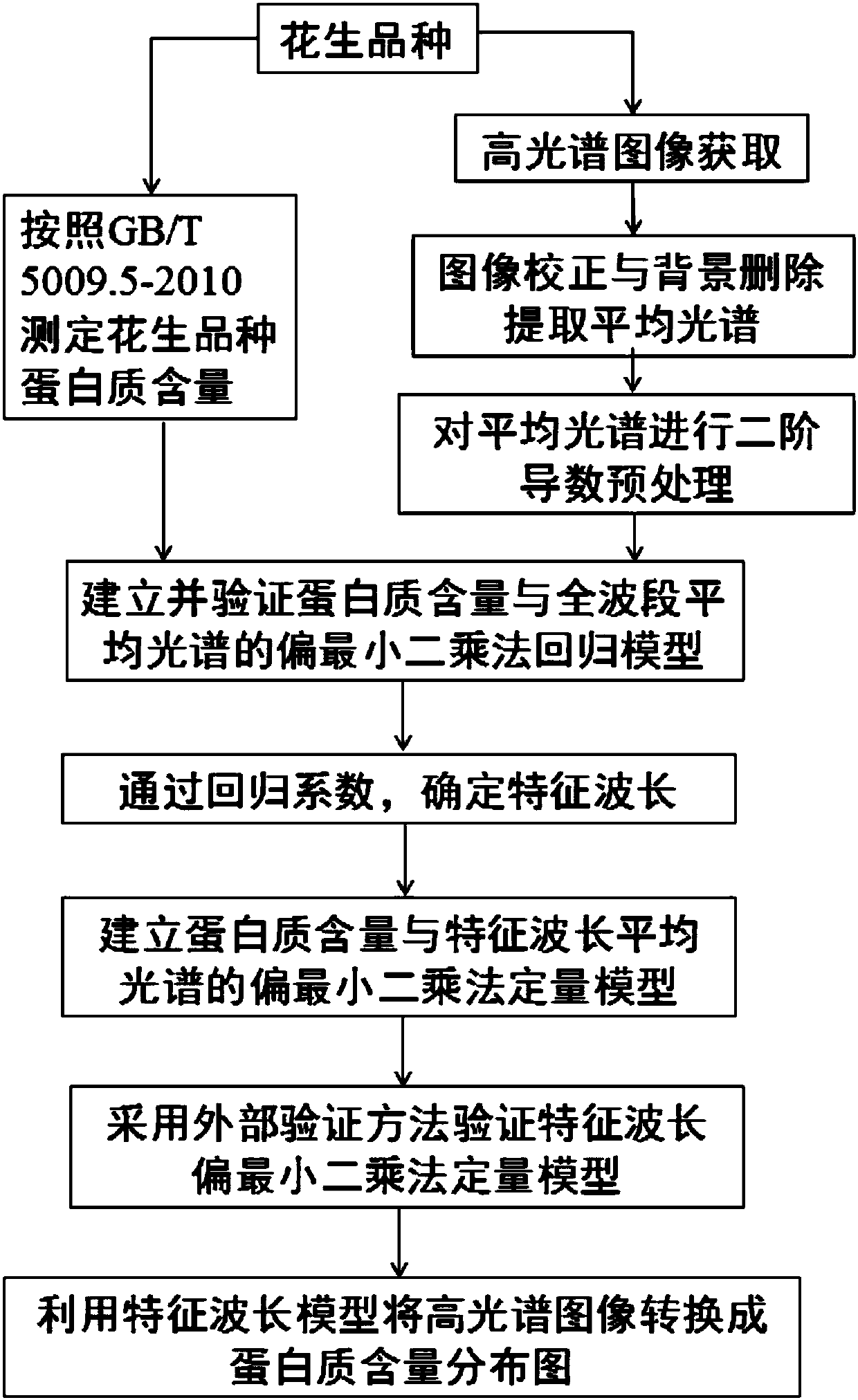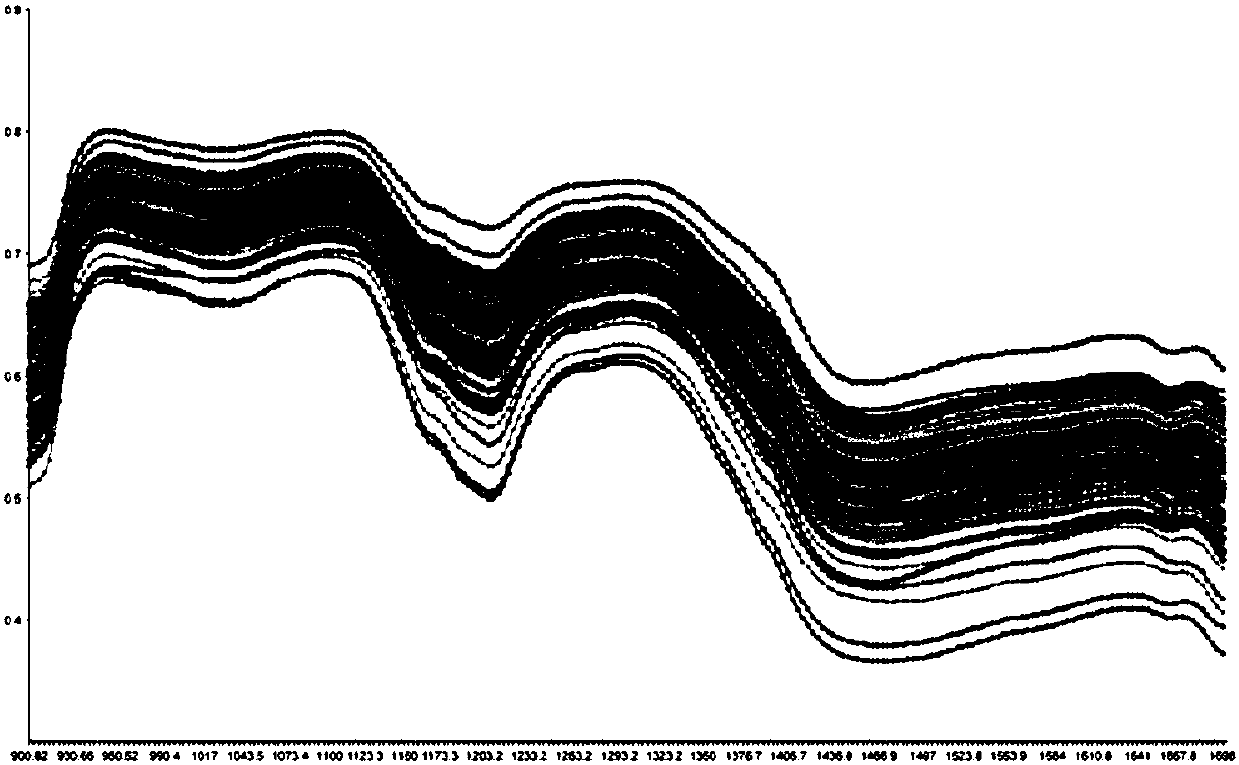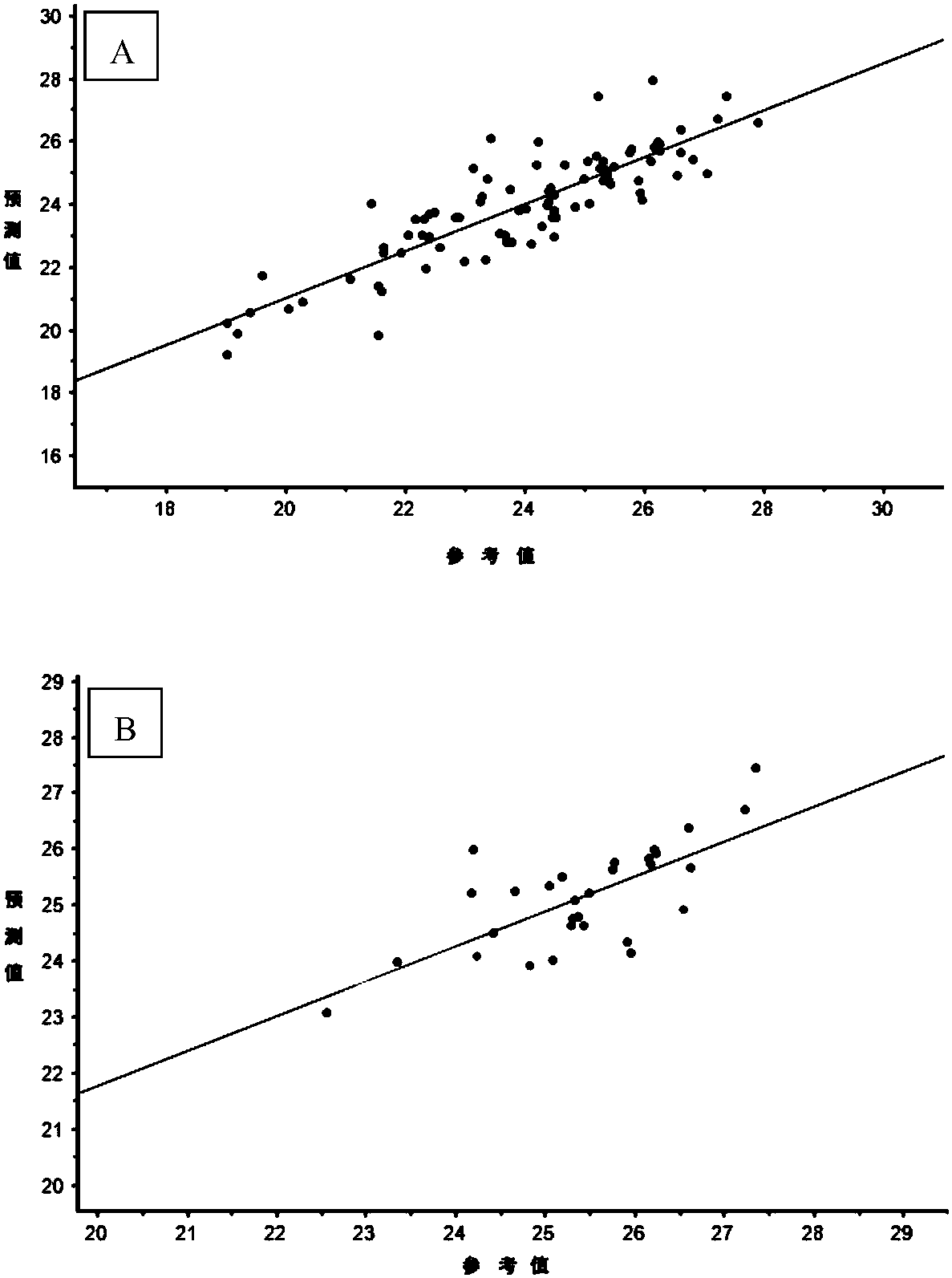Method for detection of protein content distribution in peanut based on hyperspectral imaging technology
A technology of protein content and hyperspectral imaging, which is applied in the field of detection of protein content distribution in peanuts based on hyperspectral imaging technology, can solve the problems of detection of protein content distribution in peanuts
- Summary
- Abstract
- Description
- Claims
- Application Information
AI Technical Summary
Problems solved by technology
Method used
Image
Examples
Embodiment 1
[0067] The present embodiment provides a method for establishing a quantitative model of protein content distribution in peanuts based on hyperspectral imaging technology, the method comprising the following steps:
[0068] 1.1 Collect 120 varieties of peanut samples mainly planted in my country's main planting provinces in 2012, 2013 and 2014, select 30 complete peanut kernels from each variety, and use a hyperspectral instrument to simultaneously scan each pixel point in the peanut sample at each wavelength The image information of the peanut sample was repeated three times, and the average value of the three scanned hyperspectral images was taken to obtain the original hyperspectral three-dimensional image of the peanut sample. Before each scan, collect a full white calibration image I white and all-black calibration image I dark .
[0069] 1.2 After correcting and deleting the background of the original hyperspectral three-dimensional image of the above-mentioned peanut s...
Embodiment 2
[0091] The present embodiment provides a method for detecting protein content distribution in peanuts based on hyperspectral imaging technology, the method comprising the following steps:
[0092] 1) Collect the spectral images of the peanut sample to be tested at the following characteristic wavelengths: 931nm, 934nm, 941nm, 944nm, 1020nm, 1120nm, 1137nm, 1207nm, 1273nm, 1370nm, 1380nm, 1594nm, 1654nm, 1678nm.
[0093] Specific process: Take another 6 peanut varieties, use the hyperspectral instrument to obtain the original hyperspectral three-dimensional image of the peanut sample in the same way as in Example 1; then use the same method as in Example 1 to extract the average spectrum of the peanut sample image; The average spectrum of the 6 varieties of peanut samples was preprocessed with the second derivative; finally, the spectral reflectance values of the 6 varieties of peanut samples at the above characteristic wavelengths were obtained.
[0094] 2) Input the spectra...
PUM
 Login to View More
Login to View More Abstract
Description
Claims
Application Information
 Login to View More
Login to View More - R&D
- Intellectual Property
- Life Sciences
- Materials
- Tech Scout
- Unparalleled Data Quality
- Higher Quality Content
- 60% Fewer Hallucinations
Browse by: Latest US Patents, China's latest patents, Technical Efficacy Thesaurus, Application Domain, Technology Topic, Popular Technical Reports.
© 2025 PatSnap. All rights reserved.Legal|Privacy policy|Modern Slavery Act Transparency Statement|Sitemap|About US| Contact US: help@patsnap.com



